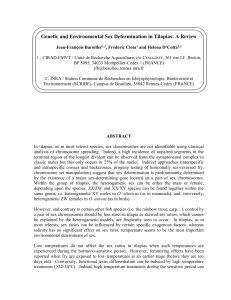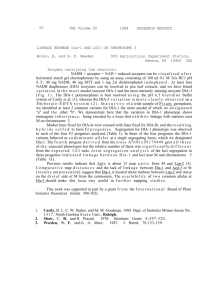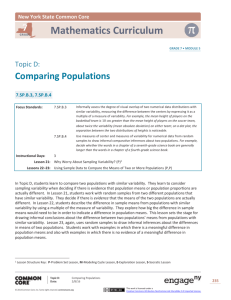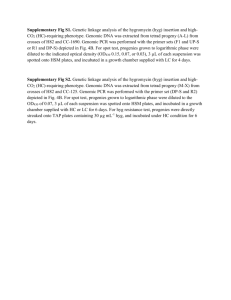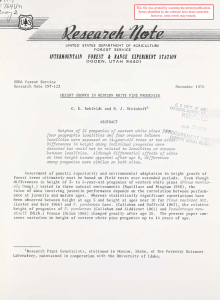variability traits
advertisement
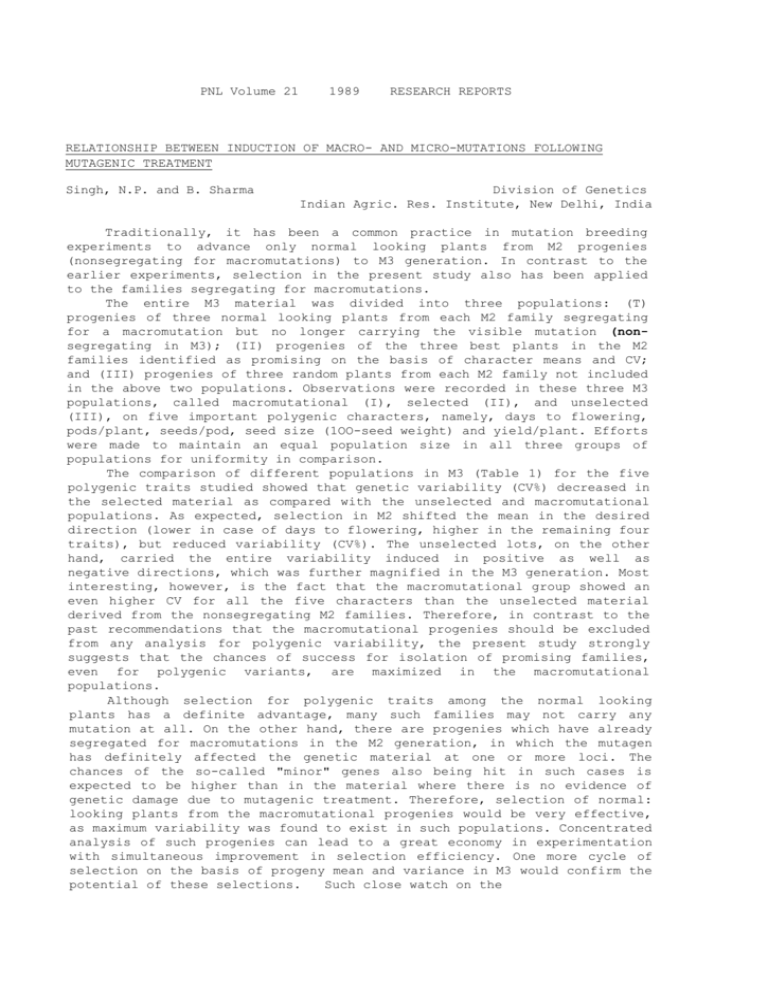
PNL Volume 21 1989 RESEARCH REPORTS RELATIONSHIP BETWEEN INDUCTION OF MACRO- AND MICRO-MUTATIONS FOLLOWING MUTAGENIC TREATMENT Singh, N.P. and B. Sharma Division of Genetics Indian Agric. Res. Institute, New Delhi, India Traditionally, it has been a common practice in mutation breeding experiments to advance only normal looking plants from M2 progenies (nonsegregating for macromutations) to M3 generation. In contrast to the earlier experiments, selection in the present study also has been applied to the families segregating for macromutations. The entire M3 material was divided into three populations: (T) progenies of three normal looking plants from each M2 family segregating for a macromutation but no longer carrying the visible mutation (nonsegregating in M3); (II) progenies of the three best plants in the M2 families identified as promising on the basis of character means and CV; and (III) progenies of three random plants from each M2 family not included in the above two populations. Observations were recorded in these three M3 populations, called macromutational (I), selected (II), and unselected (III), on five important polygenic characters, namely, days to flowering, pods/plant, seeds/pod, seed size (1OO-seed weight) and yield/plant. Efforts were made to maintain an equal population size in all three groups of populations for uniformity in comparison. The comparison of different populations in M3 (Table 1) for the five polygenic traits studied showed that genetic variability (CV%) decreased in the selected material as compared with the unselected and macromutational populations. As expected, selection in M2 shifted the mean in the desired direction (lower in case of days to flowering, higher in the remaining four traits), but reduced variability (CV%). The unselected lots, on the other hand, carried the entire variability induced in positive as well as negative directions, which was further magnified in the M3 generation. Most interesting, however, is the fact that the macromutational group showed an even higher CV for all the five characters than the unselected material derived from the nonsegregating M2 families. Therefore, in contrast to the past recommendations that the macromutational progenies should be excluded from any analysis for polygenic variability, the present study strongly suggests that the chances of success for isolation of promising families, even for polygenic variants, are maximized in the macromutational populations. Although selection for polygenic traits among the normal looking plants has a definite advantage, many such families may not carry any mutation at all. On the other hand, there are progenies which have already segregated for macromutations in the M2 generation, in which the mutagen has definitely affected the genetic material at one or more loci. The chances of the so-called "minor" genes also being hit in such cases is expected to be higher than in the material where there is no evidence of genetic damage due to mutagenic treatment. Therefore, selection of normal: looking plants from the macromutational progenies would be very effective, as maximum variability was found to exist in such populations. Concentrated analysis of such progenies can lead to a great economy in experimentation with simultaneous improvement in selection efficiency. One more cycle of selection on the basis of progeny mean and variance in M3 would confirm the potential of these selections. Such close watch on the 56 PNL Volume 21 1989 RESEARCH REPORTS experimental material and rigorous selection can lead to the isolation of confirmed promising strains in M3 which can be put to initial testing in the form of small plot trials in the M4 generation. Table 1. Effect of M2 selection on induced polygenic variability in M3 generation for different characters. Different M3 populations M2 generation Characters Selected Unselected Mean CV Mean CV Mean 8.0 75.2 8.8 75.0 7.5 70.9 8.2 74.0 Pods/plant 34.8 17.4 48.3 7.3 26.7 9.5 39.6 8.5 Seeds/pod 23.6 3.6 28.7 3.4 21 .7 3.9 26.3 3.5 100-seed weight 16.2 16.9 20.0 16.9 12.8 19.4 16.3 17.9 Seed yield/plant 40.3 7.5 48.3 3.9 30.3 5.0 41.3 4.1 Days to flowering CV Macromutational CV Mean

